

March 12, 2018
Hacks ,Hiring
I just signed up for a Virtual Assistant Service.
They made it easy on me, by making it challenging.
What?
Yes. Stay with me here…
They could have simply given me a button that said, “Sign up here.” Then they could have taken my money. Yes, that would have been an “easy” process. But how many people would do it, and just sign up cold like that.
Instead, they added friction to me buying their service, and it made it easier.
Let me show you.

First, they didn’t ask me to buy. They just invite me to try.
After clicking that, they entice me to try it for free, and take my info…
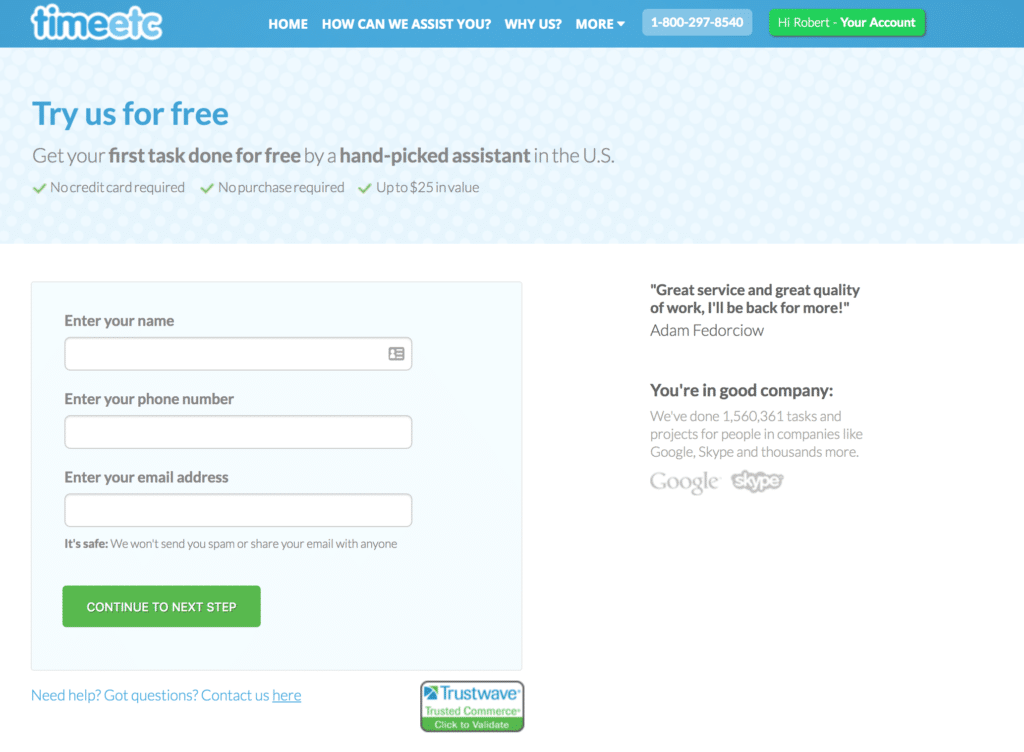
They don’t stop there, because you know how many of us sign up for something like this, let it hit our email and do nothing, right?
So instead, they get me into action, immediately. They ask me to pick a task area, and if I do it within the time limit, then I get a $25 credit.
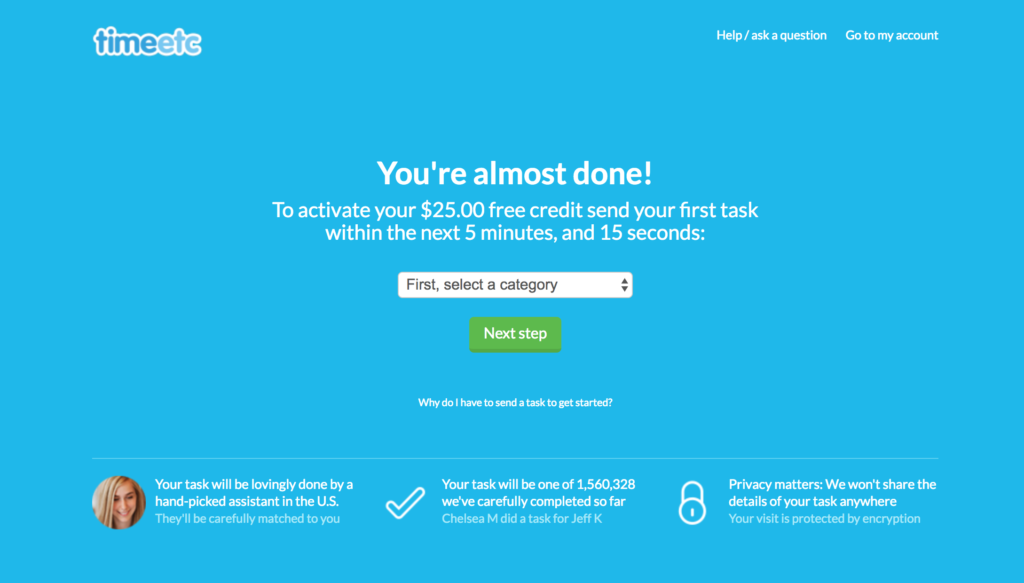
And then step by step, I pick the kind of task I want done:
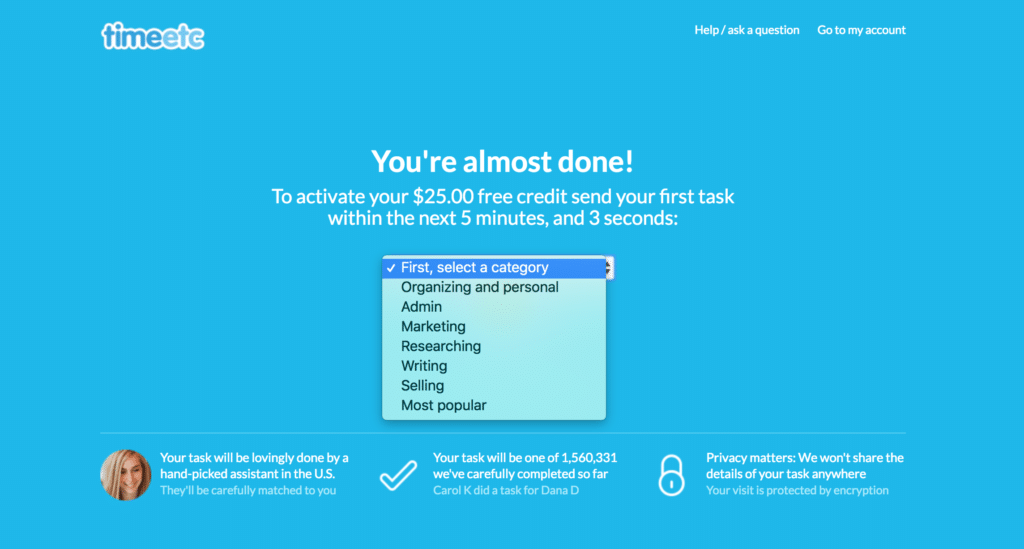
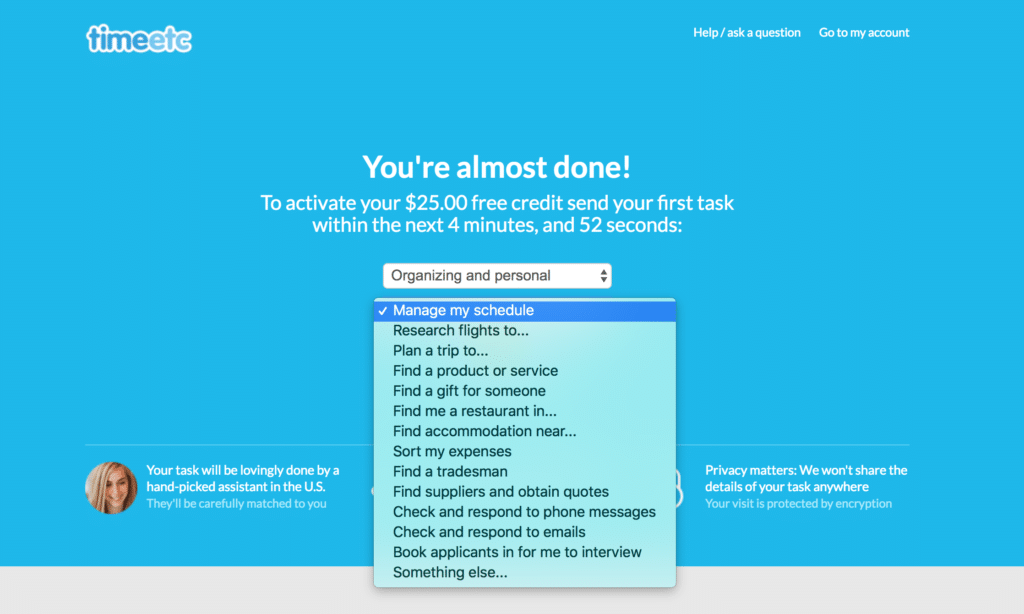
I then go on to give them exact information…
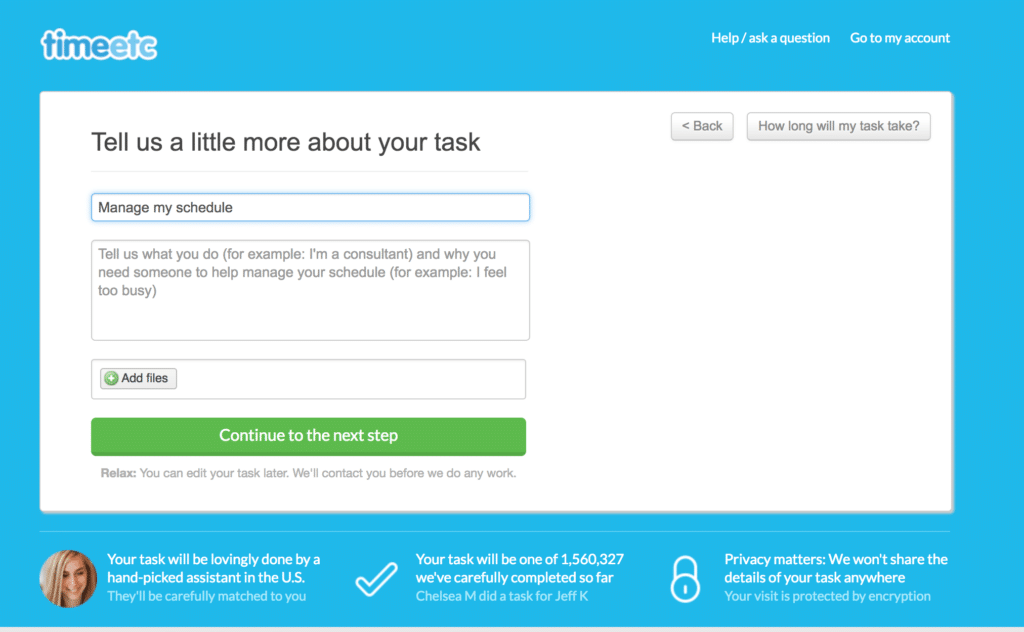
And we’re on our way.
Yes, it’s a lot of steps, but, I believe it drivers higher conversion rates because:
a) They’re very easy.
b) It screens out those who are not serious.
c) I get immediate value, and they are selling by doing.
So how does this relate to your company internally?
1) Rather than post your job opportunities, put up a form to take their email address and their interests, so that you have a way of contacting them if a relevant job comes up. If you just show them the jobs and one doesn’t apply, then you’ve lost them forever.
2) Have them contribute a video of why they are a good candidate.
3) Ask them to use a very specific subject in an email to you, just to see if they can really follow instructions and pay attention to detail. If they can’t do this simple thing, they’re out.
4) Interview people in a group, have them work together on something and have each person say a recommendation for the others to get a job. You can tell how well they play in teams, and how much they’re willing to support the bigger goal.
When I started up the Goals Coach program at Zappos, we had only one coach for 1500 people. Rather than just opening up for coaching, we had them:
1) Apply to be in it, making them think about what they want and why.
2) They had to take a class about coaching and how it works
3) Now that they have had all their prep, the sessions only took 15 minutes, rather than a full hour, thus quadrupling capacity.
Where might you add friction in your business or in your culture in order to serve the higher goal?
March 5, 2018
Great cultures ,Values
In the Culture Blueprint I talk about how culture is related to systems theory. There are feedback loops (culture feeds on itself).
Here are the two kinds and why you should know about them:
These are the values you want to be known for. You want reinforce behaviors that support these values.
I would actually call these counter-balancing loops. They make sure the intended value does not go out of control, because any system that is optimized for a value without a counterbalance will tip over.
Let me explain…
At Zappos, the first value is “Deliver WOW! through service.” There are many reinforcing behaviors that go into this, from the way calls are answered to how problems are handled.
But… if that was the only value, imagine how it would go out of control if followed to an extreme. People would spend a lot of money on making customers happy, even to the detriment of the company. Or, people would focus so much on helping the customer that they would lose focus on themselves and burn out.
So the counter balancing values are “Do more with less” to keep costs down, and “Create Fun and a Little Weirdness” to make sure everyone is taking care of themselves.
You can see this in many companies.
Google places a high priority on academics. So they balance the education intensity of college with all the amenities of college too.
Apple is known for pursuing excellence. But if they only pursued excellence they would never ship because it would never be perfect. And because of that, they also have a high tolerance for failure. Steve Jobs said he loved the products they never created as much as the ones that they did.
So take the highest value you have for your company. Now take it to an extreme. Now what would be the counter balance?
Oh, and what do you think Steve Jobs said when asked what his all-time favorite invention was?
It was Apple itself – The company. Meaning the culture and people. Culture is the key factor.
December 1, 2017
Great cultures
When people see I have zero emails in my inbox they can’t believe it. I usually teach this to individuals or at companies, but I wanted more people to have it, so here is a webinar I created with the principles, hacks and tools.
October 4, 2017
Great cultures ,Hacks
It used to take me weeks to figure out a culture. I would spend a lot of time with the company and then write a long report about what’s going on.
Now I can quickly diagnose a culture with this question:
“Are people on time for meetings and do they end on time?”
For culture to work properly, it’s all about agreements – our cultural norms. And our realities can be so different that there’s not a lot we can agree on. Even something as simple as honesty can break down when you ask if white lies are okay, or if you argue whether taking pens home from the office is dishonest.
But one thing we can agree on is that we all go by the same clock.
Time is the great equalizer.
So when one person puts their time agenda above others, then the culture system breaks down. That may sound extreme but think of it this way…
Let’s say Bob is leading a meeting that’s supposed to end by 9am and he decides he needs 10 extra minutes to get his point across. Because Bob is a manager people feel like they have to stay. Meanwhile Susan is losing time for her 9am meeting because she needs those people there, who (now) will not be on time.
To put it simply – Being late is all about prioritizing your own individual needs above the group needs. And that is when things break down.
Will being on time solve all problems? No, but it sets the foundation because:
a) People respect the whole over the individual (as a practice)
b) People learn to work with constraints
c) People learn to put integrity above any goal
In all my years of knowing Tony (CEO of Zappos) I have never once seen him be late (both personally and professionally). And he is a leader who achieves a lot, has a ton of fun, and delegates like a master.
Don’t believe me.
Try it (just for a week) and see what happens.